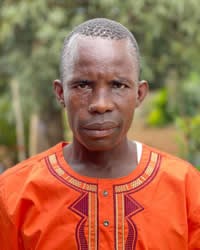Kono in Sierra Leone

Photo Source:
Copyrighted © 2025
Kerry Olson All rights reserved. Used with permission |
Send Joshua Project a map of this people group.
|
| People Name: | Kono |
| Country: | Sierra Leone |
| 10/40 Window: | No |
| Population: | 353,000 |
| World Population: | 353,000 |
| Primary Language: | Kono (Sierra Leone) |
| Primary Religion: | Ethnic Religions |
| Christian Adherents: | 12.00 % |
| Evangelicals: | 1.00 % |
| Scripture: | New Testament |
| Ministry Resources: | Yes |
| Jesus Film: | Yes |
| Audio Recordings: | Yes |
| People Cluster: | Manding |
| Affinity Bloc: | Sub-Saharan Peoples |
| Progress Level: |
|
Introduction / History
The ancestors of the Kono people arrived in their Sierra Leone location from what is now Mali and Guinea. They came in the 1500s.
What Are Their Lives Like?
Though some are diamond miners, most Kono people are farmers. They grow all kinds of fruits and vegetable for their own dinner tables and cash crops like kola nut, coffee and cacao.
Each day they travel from their villages to their farms to begin work. At one time they built their homes with mud, clay and thatch, but today they use cement and adobe blocks. Roofs are made out of corrugated sheet metal. These rectangular homes include a veranda where the women cook.
When the sun set, they gather in the open courtyard to sing and dance. They form a single file circle. Everyone makes up their own dance steps and the music is provided by drums for rhythm.
What Are Their Beliefs?
Though the Kono people adhere to either Islam or Christianity, they also practice their own ethnic religion. This usually involves invoking ancestral spirits whom they believe can protect and guide them. They believe these ancestral spirits stay with them during all their daily activities and even during sleep.
What Are Their Needs?
The Kono people need to put all their trust in Jesus Christ, the King of kings and Lord of lords.
Prayer Points
Pray for the Kono people to put their faith in the only savior.
Pray for Kono disciplers to make more disciples.
Pray for spiritual hunger for truth that will lead them to the foot of the cross.